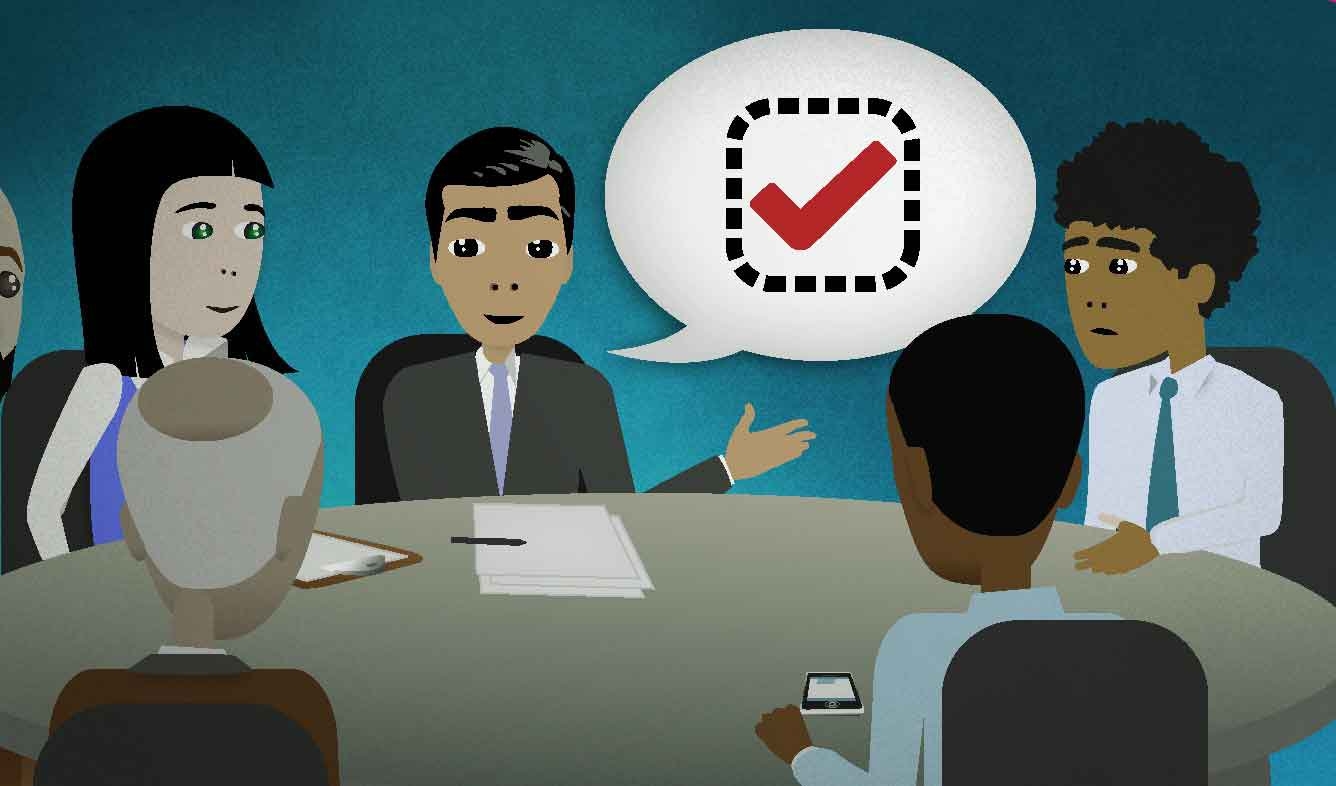“OK. Let's go with that then.”
You're leading a meeting at work. You've been discussing a project that you're planning. Everyone in the meeting has agreed on a plan. You say something to end the discussion.
OK. Let's go with that then.
Want Video and Sound? Follow us on YouTube

Let's (do something).
The phrase "Let's ___" is well-known to English learners. However, learners often over-use "Let's ___" and use it in situations where it isn't appropriate.
When can you say "Let's ___"? You usually use it when you're suggesting something that you're sure the listener will accept. If you're meeting a friend for lunch, then you're sure that they will agree to eat with you. So you can say:
In situations where you're not sure how the listener will respond to your suggestion, you can use other phrases like "Would you like to ___?", "Why don't we ___?" or "We should ___":
Would you like to go out to dinner with me some time?
Why don't we meet at 7:30?
We should get together some time and have a drink.
OK.
One of the ways that English speakers use "OK" is to signal a change in the flow of conversation.
For example, before you begin a meeting everyone might be making small talk and chatting about different topics. To start the serious business part of the meeting, you can start with "OK".
You can also use "OK" when you want to:
- start a new topic of conversation
-
announce a decision
-
ask other people to make a decision
-
end a conversation
go with (something)
To "go with" something means to choose it. For example, you can say this when shopping for something like shoes:
I think I'll go with the red ones.
You can ask someone:
Which one are you going to go with?
And you can also talk about the past:
We went with the second suggestion.
(sentence) then.
When you announce a decision or conclusion, you can end your sentence with "then":
A: I have a bunch of stuff in the back of my car.
B: OK, I'll drive separately then.
A: They said it would be ready by the end of last week.
B: I'll follow up with them then.
